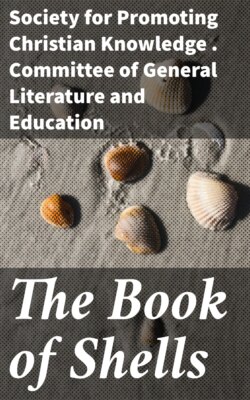Читать книгу The Book of Shells - Society for Promoting Christian Knowledge . Committee of General Literature and Education - Страница 14
На сайте Литреса книга снята с продажи.
The Money Cowrie, (Cypræa moneta.)
ОглавлениеThe Money Cowrie of Guinea is very common on the Indian and African coasts; and is used by many of the inhabitants of Africa as a circulating medium; it is also employed for the same purpose in Hindoostan, particularly at Calcutta, where great quantities are obtained from the inhabitants of the Maldive Islands in exchange for rice.
Cypræa moneta.
Many tons of Cowries are annually shipped from England to Guinea; these having been originally brought from the Maldive Islands to Bengal, and from thence sent into this country. The value of these shells as a circulating medium depends naturally enough on their greater or less abundance.
In Bengal, in general, from 2000 to 2400 are equal in value to a shilling. But in Africa they are much dearer, about 250 being valued at a shilling.
The Cowrie shell is found of three different forms, according to its age. First, in its extreme youth, when the shell is extremely imperfect, and is like a slender one, without any appearance of the usual characters of the genius. Secondly, when half-grown; it then begins to assume the form of the perfect shell, but is extremely slight, and colourless, and the point of its spire projects. Thirdly, when perfect; it has now received a second deposit of shelly matter, in which its specific colours appear, and its spire is completely hidden. The second deposit with which the shell is covered, is secreted by the two membranous wings of the creature’s mantle, which, in the adult state of the animal, have rapidly increased and become extremely large, so much so, as to be capable of covering the whole of the shell, while the deposition of the new matter is taking place.
Lamarck says the observations of the habits of this creature tend to prove that, in addition to the power of completing its shell, as we have already noticed, it can, when its increased size has caused it to require a new habitation, desert its former shell and form a new one; from this it happens that the same individual can form successively many shells of different sizes, so that we find the same species both large and small.
When not in search of food, these animals are found buried in the sand, at some distance from the sea-shore, in temperate as well as in hot climates.
Family COLUMELLARIA.
This family is distinguished, from the next in having the columella plaited, and a notch at its base. It does not include any shells with a plaited columella, the opening at the base being entirely smooth, that is, without a notch.
